Related Research Articles
A music video, sometimes abbreviated to M/V, is a video of variable duration that integrates a song or an album with imagery that is produced for promotional or musical artistic purposes. Modern music videos are primarily made and used as a music marketing device intended to promote the sale of music recordings. These videos are typically shown on music television and on streaming video sites like YouTube, or more rarely shown theatrically. They can be commercially issued on home video, either as video albums or video singles.

Video editing is the manipulation and arrangement of video shots. Video editing is used to structure and present all video information, including films and television shows, video advertisements and video essays. Video editing has been dramatically democratized in recent years by editing software available for personal computers. Editing video can be difficult and tedious, so several technologies have been produced to aid people in this task. Pen based video editing software was developed in order to give people a more intuitive and fast way to edit video.

iMovie is a free video editing application made by Apple for the Mac, the iPhone, and the iPad. It includes a range of video effects and tools like color correction and image stabilization, but is designed to be accessible to users with little or no video editing experience. iMovie's professional equivalent is Apple's Final Cut Pro X.
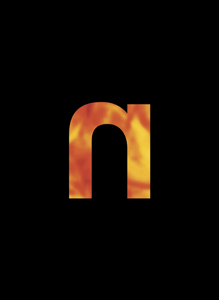
Broken is a 1993 horror musical short film and long-form music video filmed and directed by Peter Christopherson. It is based on an idea by Trent Reznor, founder of industrial rock band Nine Inch Nails, and is a companion piece to the 1992 Nine Inch Nails EP Broken.
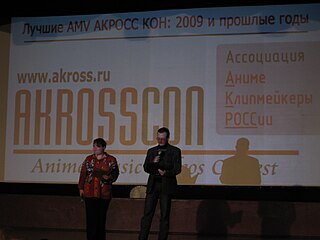
An anime music video (AMV) is a fan-made music video consisting of clips from one or more Japanese animated shows or movies set to an audio track, often songs or promotional trailer audio. The term is generally specific to Japanese anime, however, it can occasionally include footage from other mediums, such as American animation, live action, or video games. AMVs are not official music videos released by the musicians, they are fan compositions which synchronize edited video clips with an audio track. AMVs are most commonly posted and distributed over the Internet through AnimeMusicVideos.org, video downloads and YouTube. Anime conventions frequently run AMV contests who usually show the finalists/winner's AMVs.
Stock footage, and similarly, archive footage, library pictures, and file footage is film or video footage that can be used again in other films. Stock footage is beneficial to filmmakers as it saves shooting new material. A single piece of stock footage is called a "stock shot" or a "library shot". Stock footage may have appeared in previous productions but may also be outtakes or footage shot for previous productions and not used. Examples of stock footage that might be utilized are moving images of cities and landmarks, wildlife in their natural environments, and historical footage. Suppliers of stock footage may be either rights managed or royalty-free. Many websites offer direct downloads of clips in various formats.
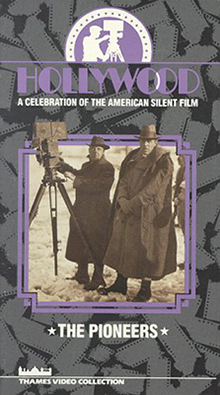
Hollywood is a multi-BAFTA award winning 1980 documentary series produced by Thames Television which explored the establishment and development of the Hollywood studios and their impact on 1920s culture. At the 1981 BAFTA television awards, it won Best Factual Series, Best Film Editing and Best Graphics.

Closure is the first video album by American industrial rock band Nine Inch Nails, released on November 25, 1997. The double VHS set consists of one tape of live concert and behind-the-scenes footage from their Self-Destruct and Further Down the Spiral tours and one tape of music videos.

Windows Movie Maker is a discontinued video editing software program by Microsoft. It was first included in Windows Me on September 14, 2000 and in Windows XP on October 25, 2001. It was a part of the Windows Essentials software suite, and offered the ability to create and edit videos as well as to publish them on OneDrive, Facebook, Vimeo, YouTube, Windows Live Groups, and Flickr. It is comparable to Apple’s iMovie.
A compilation film, or compilation movie is a film composed of scenes and shots taken from two or more prior films and edited together so as to make a new film, whether on the same or a different subject. The most common example would be a documentary film on an historical event composed of footage from various newsreels and other film documentaries on the same subject. New footage and/or a new soundtrack may also be included in a compilation film, but the compiled, older footage makes up the majority of its principal material. Compilation film does not include, however, a simple editing together of several short films, complete in themselves and distinguished as such from each others, which should be considered as film anthologies.
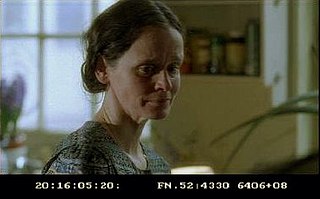
A workprint is a rough version of a motion picture, used by the film editor(s) during the editing process. Such copies generally contain original recorded sound that will later be re-dubbed, stock footage as placeholders for missing shots or special effects, and animation tests for in-production animated shots or sequences.

TVARK is an online archival website of images, sound and video clips illustrating British television presentation history. Content includes idents, programme promotions, title sequences, public information films, commercials, daily start-ups and closedowns, break bumpers and station clocks. Each item has a short written analysis.
A re-edited film is a motion picture that has been modified from the manner in which it was showcased in its original theatrical release. Reasons for this type of editing may range from the distributor's demands to accommodating different audience groups. Fan-made movie edits are often met with controversy, as they bring up issues of copyright law.
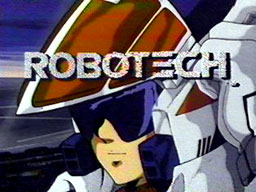
Robotech is an American 85-episode adaptation of three unrelated Japanese anime television series made between 1982 and 1984 in Japan; the adaptation was aired in 1985. Within the combined and edited story, Robotechnology refers to the scientific advances discovered in an alien starship that crashed on a South Pacific island. With this technology, Earth developed giant robotic machines or mecha to fight three successive extraterrestrial invasions.
Film distribution is the process of making a movie available for viewing by an audience. This is normally the task of a professional film distributor, who would determine the marketing and release strategy for the film, the media by which a film is to be exhibited or made available for viewing and other matters. The film may be exhibited directly to the public either through a movie theater or television, or personal home viewing. For commercial projects, film distribution is usually accompanied by film promotion.
HomeMovie.Com is a video sharing and photo sharing website. It is usually used by individuals for easy online video recording, video editing, online video storage and online video sharing. Unlike other video sharing companies, HomeMovie.Com specializes in helping users with editing and sharing long-form video (videotapes) instead of short video clips. HomeMovie.Com is one of only two companies with a web-based video recording feature.

Home video is recorded media sold or rented for home viewing. The term originates from the VHS and Betamax era, when the predominant medium was videotapes, but has carried over to optical disc formats such as DVD, Blu-ray and streaming media. In a different usage, "home video" refers to amateur video recordings, also known as home movies.
Sir John Mills' Moving Memories is a British documentary film featuring 16mm color home movies shot by the actor Sir John Mills. It documents his life between 1946 and 1969, directed and edited by Marcus Dillistone and produced by his son Jonathan Mills. Commentary was provided by Sir John, Hayley Mills, Juliet Mills and Sir Richard Attenborough. His wife Mary Hayley Bell is also seen towards the end of the film listening to her husband singing at the piano. The scene was later to be screened in full when Sir John appeared on the Parkinson chat show.

Everything Is Terrible! is an artist collective based in Los Angeles that finds and manipulates unusual, dated, and campy clips of VHS tapes from the late 20th century and early 21st century. It was founded in 2007 by a group of friends who met at Ohio University in the early 2000s. The collective has posted daily on a blogger-hosted website since it was founded.
A supercut is a genre of video editing consisting of a montage of short clips with the same theme. The theme may be an action, a scene, a word or phrase, an object, a gesture, or a cliché or trope. The technique has its roots in film and television and is related to vidding. The montage obsessively isolates a single element from its source or sources. It is sometimes used to create a satirical or comic effect or to collapse a long and complex narrative into a brief summary.
References
- ↑ "Make Your Own Mixtape". 2006. Retrieved 2010-01-20.
- ↑ "repare Yourself For Video Mixtape Month on The Pirate Bay". 2009. Retrieved 2010-01-20.